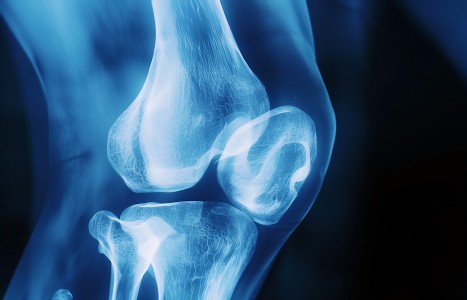This article focuses on nine severe injuries that are generally not diagnosable until the third to fourth week following the date of injury, including how to diagnose these severe injuries. The discovery of any of these injuries early can make a significant difference in the case outcome.
| Digital ExclusiveDiagnosis and Treatment of Cuboid Syndrome
Cuboid syndrome describes a common but poorly recognized, often mistreated and misdiagnosed condition of the foot. Cuboid syndrome has also been referred to as cuboid subluxation, locked cuboid, dropped cuboid, cuboid fault syndrome, lateral plantar neuritis and peroneal cuboid syndrome. Cuboid syndrome is defined as a minor disruption or subluxation of the structural congruity of the calcaneocuboid portion of the midtarsal joint. The disruption of the cuboid's position irritates the surrounding joint capsule, ligaments and peroneus longus tendon.1
Cuboid syndrome is a common cause of lateral foot pain in the athletic population and has been implicated as a complication of plantar flexion and inversion ankle injury. Inversion ankle sprains are one of the most common athletic injuries, accounting for between 38 percent and 45 percent of all injuries. Up to 40 percent of these patients have residual symptoms, with cuboid syndrome being a likely offender.2
Mechanism of Injury and Symptoms
As the foot and ankle are placed into plantar flexion and inversion, the peroneus longus tendon places a dorsal and lateral force on the forefoot, creating a close-packed position and forcing the cuboid in an inferomedial direction, tearing the interosseous ligaments.3 When the foot and ankle are forced rapidly into plantar flexion and inversion, a stretch reflex occurs, creating a reflex contraction of the peroneus longus muscle attempting to get the foot medial to the ground.1 The peroneus longus exerts a dorsal and lateral force on the cuboid, resulting in inferomedial displacement.3
Cuboid syndrome has been reported to be diagnosed frequently in professional ballet dancers, accounting for 17 percent of all reported foot and ankle conditions.4 This condition usually occurs in male dancers when they land from jumps. Female dancers develop cuboid syndrome from overuse due to repetitive pointe work. Going from foot flat to demi pointe creates a dorsiflexion moment of the midfoot, which becomes a plantar flexion moment while the foot moves to pointe. These forces reverse to dorsiflexion moment when the foot returns to the flat position. The repetitive forces gradually reduce the stability of the midfoot and can predispose the dancers to cuboid syndrome.
A patient with cuboid syndrome will complain of lateral foot pain and weakness in the toe-off portion during the gait cycle. It is not uncommon for the pain to radiate to the plantar aspect of the medial foot, the anterior ankle joint or distally along the fourth ray.3
The cuboid bone acts as a keystone of the lateral column and provides inherent stability to the foot. The calcaneocuboid joint rotates around a medially positioned axis because the ligaments on the dorsal medial side of the joint are tighter than the ligaments on the plantar and lateral surface of the joint.
The position of the cuboid is also influenced by the peroneus longus muscle. This muscle originates on the upper one-third of the fibula. It then travels distally down the shaft of the fibula and posteriorly around the lateral malleolus and on to the cuboid. The tendon continues on through the peroneal groove to its insertion on the lateral base of the first metatarsal and first cuneiform.5
The peroneus longus is a stance phase muscle, contracting midway through the midstance phase through to the late propulsive (toe-off) phase. In a foot that is supinating at the subtalar joint during propulsion, it acts as a dynamic stabilizer of the forefoot as it assists in plantar flexion of the first ray while using the cuboid as a pulley, increasing the advantage of the peroneus longus.1 If the subtalar joint is pronating during early toe-off, the soleus muscle relaxes while the peroneus longus lifts the lateral foot, which becomes unstable and could contribute to dysfunction of the cuboid.6
A pronated foot, which occurs in 80 percent of patients, creates an unstable and hypermobile foot, increasing the mechanical advantage of the peroneus longus muscle. The increase in mechanical advantage is theoretically able to sublux the pronated, unstable cuboid as the rear foot resupinates into propulsion.1
A pronated foot in conjunction with a plantar flexed lateral column may also produce large enough abnormal forces to overwhelm the soft tissues surrounding the cuboid, due to the excessive lateral midfoot pressure.7 Every degree of subtalar pronation that occurs produces an exponential increase in midtarsal joint instability.1 The pathomechanics of cuboid syndrome may commence from an eversion of the cuboid from an inverted foot position, such as the mechanism of injury for a lateral ankle sprain.7
Assessment and Diagnosis
As with any patient who experiences overuse stressor trauma to a joint, the motion of that joint must be assessed. Normal motion is assessed by evaluating both active physiologic motion and passive accessory motion. Active physiologic motion is movement that can be voluntarily performed; passive accessory motion is movement that cannot be reproduced voluntarily.8 Both components are necessary for full, pain-free range of motion.
Joint range of motion is pathologic when it is less than or exceeds normal anatomic limits. Joint play must be assessed passively and also be within normal anatomic limits. All cases in the literature describing subluxated cuboid bone describe plantar displacement of the bone.9 In clinical practice, physicians will find patients also presenting with dorsal subluxations. The direction of the subluxated cuboid is based largely on the assessment of accessory joint glides and passive physiological motion tests.9
Subjectively, the patient will typically present with lateral foot pain reflecting acute or chronic onset. Occasionally there is a history of a lateral ankle sprain preceding symptoms. Pain is located over the cuboid bone and may radiate into the plantar medial arch or distally over the fourth metatarsal. Patients will also report pain while standing and normal weight-bearing, and weakness and pain during toe-off of the propulsive phase of gait.
Objectively, the physician may observe swelling, redness, and ecchymosis. Palpation can reproduce point tenderness pain by applying pressure dorsally on the plantar surface of the cuboid, pushing it further into distortion. The foot may be pronated, as cuboid syndrome occurs more often in pronated feet.1 There will also be a reduction in dorsal-plantar joint play.
Severely subluxated cuboid bone may be visualized as a depression on the dorsal aspect of the foot and fullness on the plantar surface of the foot. The peroneus longus muscle may muscle test as weak and painful. Normal active and passive range of motion at the foot and ankle may be decreased when compared to the non-painful side. The tarsometatarsal and midtarsal glide tests may be positive if they reproduce the patient's complaint. The midtarsal adduction test and midtarsal supination test may also be useful in reproducing the patient's symptoms and helping the clinician accurately diagnose cuboid syndrome.
The use of X-rays, computerized tomography or magnetic resonance imaging contributes little to the diagnosis of cuboid syndrome. Radiographic imaging should be performed to rule out underlying pathology such as a fracture or tumor.3
Differential diagnosis to consider for an athlete who presents with lateral foot pain includes tarsal coalition, sinus tarsi syndrome, tendonitis of the peroneus longus and extensor digitorum brevis tendon, fracture (including stress fractures, Jones fracture and fracture of the anterior calcaneal process), gout, inflammatory and non-inflammatory arthritis, lateral plantar nerve entrapment, and Lisfranc injuries.5
Conservative Treatment Strategies
Once the diagnosis of cuboid syndrome has been made, the condition responds exceptionally well to conservative treatment.5 The subluxation must be treated with a high-velocity, low-amplitude manipulation. Other conservative treatments include therapeutic modalities, therapeutic exercise, low dye taping, and padding as adjuncts to cuboid manipulation techniques.1
The original manipulative technique for plantar subluxations as described by Newell and Woodle was called the "Black Snake Heel Whip." This technique has since been modified and is performed with the patient standing with the knee flexed to 90 degrees. Positioning the knee in flexion reduces the stress of the gastrocnemius.
Also, to avoid stretching and possibly damaging the superficial peroneal nerve,10 the manipulation is performed by interlocking the fingers over the dorsum of the foot while the thumbs are positioned on the plantar aspect of the cuboid. With the knee in 70-90 degrees of flexion and the ankle in zero degrees of dorsiflexion, the clinician extends the patient's knee and plantar, flexing the ankle with slight supination of the subtalar joint.1 A thrust is then directed using both thumbs on the plantar aspect of the cuboid.
It has been my experience that the patient experiences an immediate decrease in pain. Manipulation done to other areas of the body has shown to provide an analgesic effect attributed to the gate theory of pain and elevation in plasma beta endorphin levels.11
It is often best to proceed cautiously when manipulating a patient. Begin by using some foot mobilization technique, such as the metatarsal sheer to relax the foot and muscles. After the manipulation is performed, the patient must be reassessed to determine the effectiveness of the manipulation and reassess the patient at a functional level. Modalities may be used to control pain and reduce inflammation.
Pulsed ultrasound initially may facilitate collagen synthesis and can then be converted to continuous ultrasound to promote further healing of the damaged tissues. Flexible, custom-made orthotics could be provided to support the cuboid and reduce foot pronation, which is a contributing factor to cuboid syndrome. Exercise should focus on stretching the peroneus longus and triceps surae muscles. Strengthening the intrinsic and extrinsic muscles of the foot combined with proprioceptive training will help the patient recover in a more complete fashion.
Exclude all possible contraindications to manipulation. Some of these would include fracture, infection, neoplastic bone disease, inflammatory arthritis, and gout.
Generally speaking, if cuboid syndrome has been present for a week or two, it will respond to one or two manipulations. On the other hand, if a patient has had symptoms for six months, it may take up to six months to resolve completely, but with a 50 percent improvement in symptoms immediately after a successful manipulation.10
References
- Blakeslee TJ, Morris JL. Cuboid syndrome and the significance of midtarsal joint stability. Journal of the American Podiatry Medical Association, 1987;77(12):638-642.
- Freeman MA. Instability of the foot after injuries to the lateral ligament of the ankle. Journal of Bone and Joint Surgery (British), 1965;47:669-677.
- Caselli M, Pantelaras N. How to treat cuboid syndrome in the athlete. Podiatry Today, 2004;17(10).
- Marshall P, Hamilton WG. Cuboid subluxation in ballet dancers. American Journal of Sports Medicine, 1992;20(2):169-175.
- Patterson SM. Cuboid syndrome: a review of the literature. Journal of Sports Science and Medicine, 2006;5:597-606.
- Root MW, Weed J. "Normal and Abnormal Function of the Foot." Clinical Biomechanics, Inc., Los Angeles, 1977.
- Subotnick SI. Peroneal cuboid syndrome. Journal of the American Podiatry Medical Association, 1989;79(8):413-414.
- Cookson JC, Kent BE. Orthopedic manual therapy - an overview. Physical Therapy, 1979;59(2):136-145.
- Mooney M, Ward LM. Cuboid plantar and dorsal subluxations: assessment and treatment. Journal of Orthopaedic & Sports Physical Therapy, October 1994;20(4).
- Newell SG, Woodle A. Cuboid syndrome. Physician and Sports Medicine, 1981;9:71-76.
- Melzack R, Wall PD. Pain mechanisms: a new theory. Science, 1965;150:971-975.


